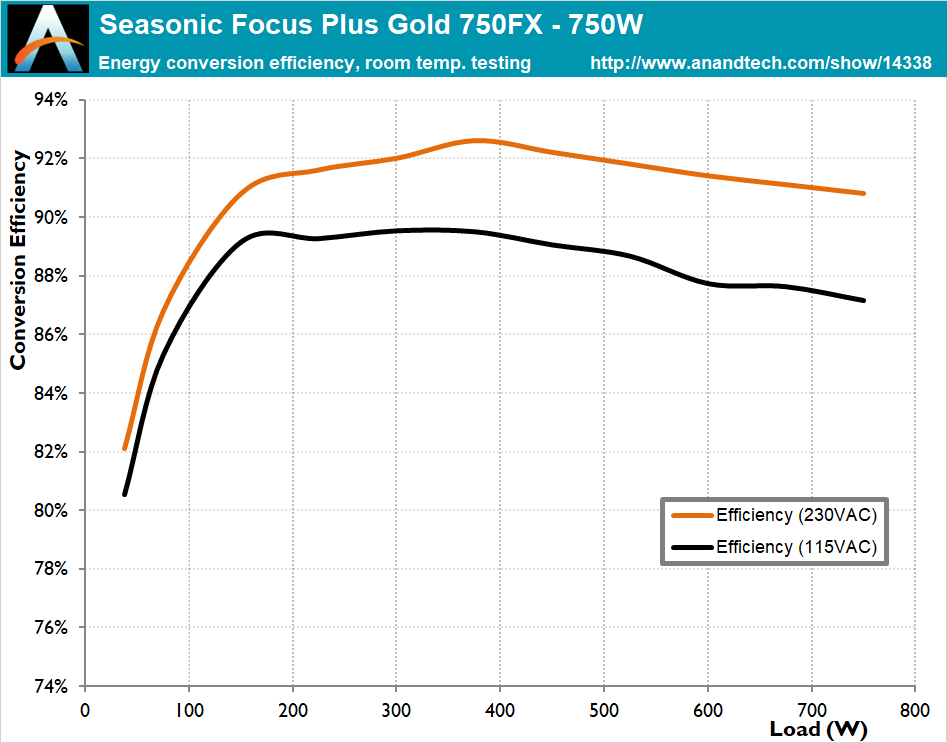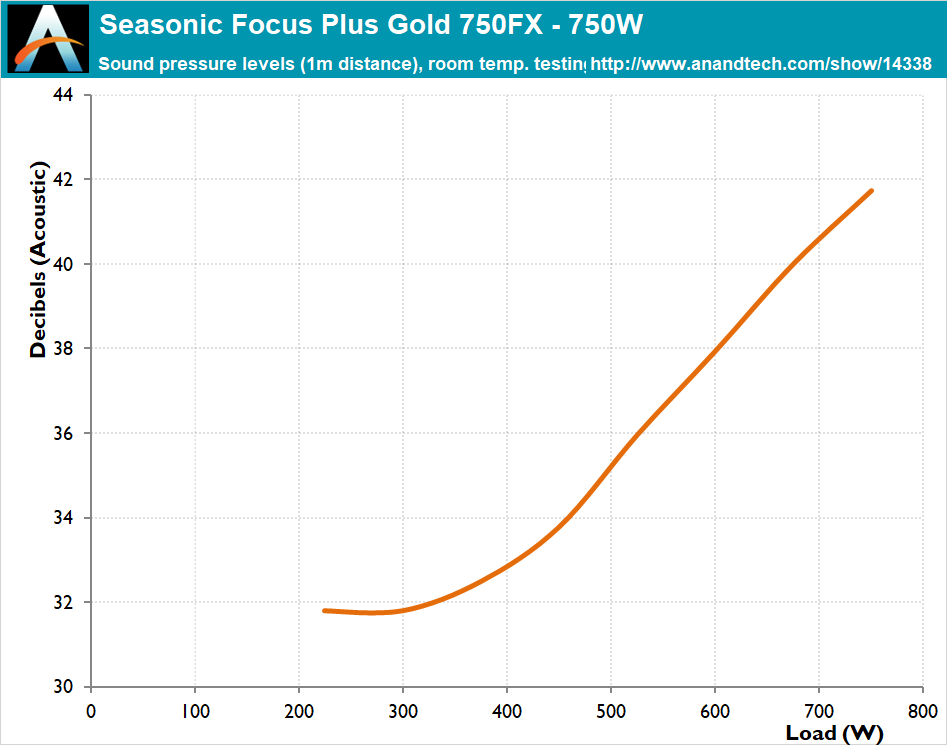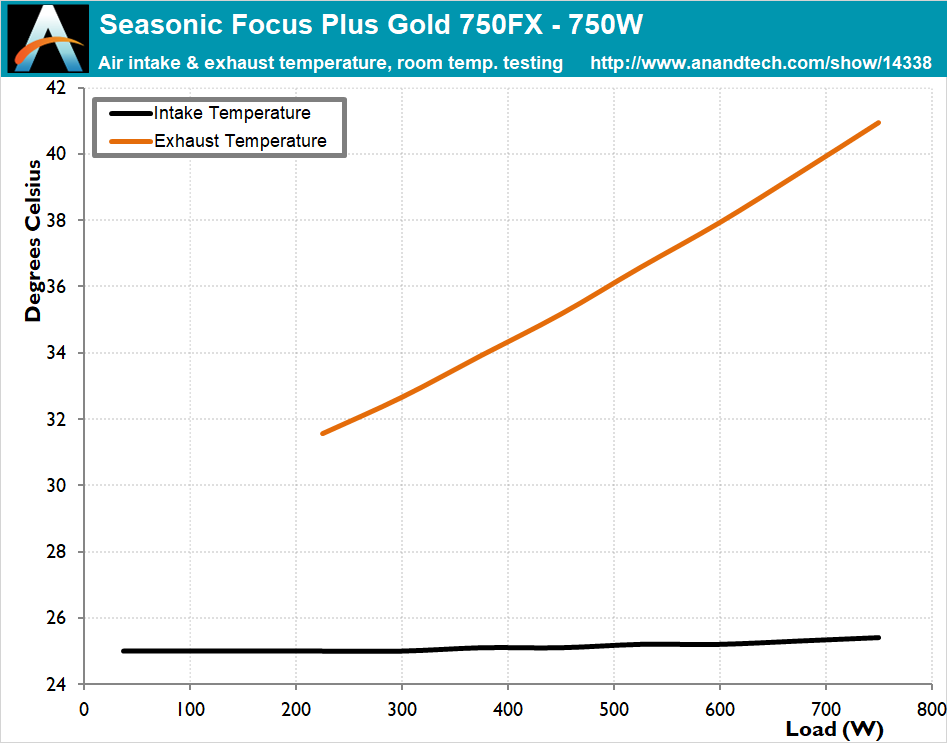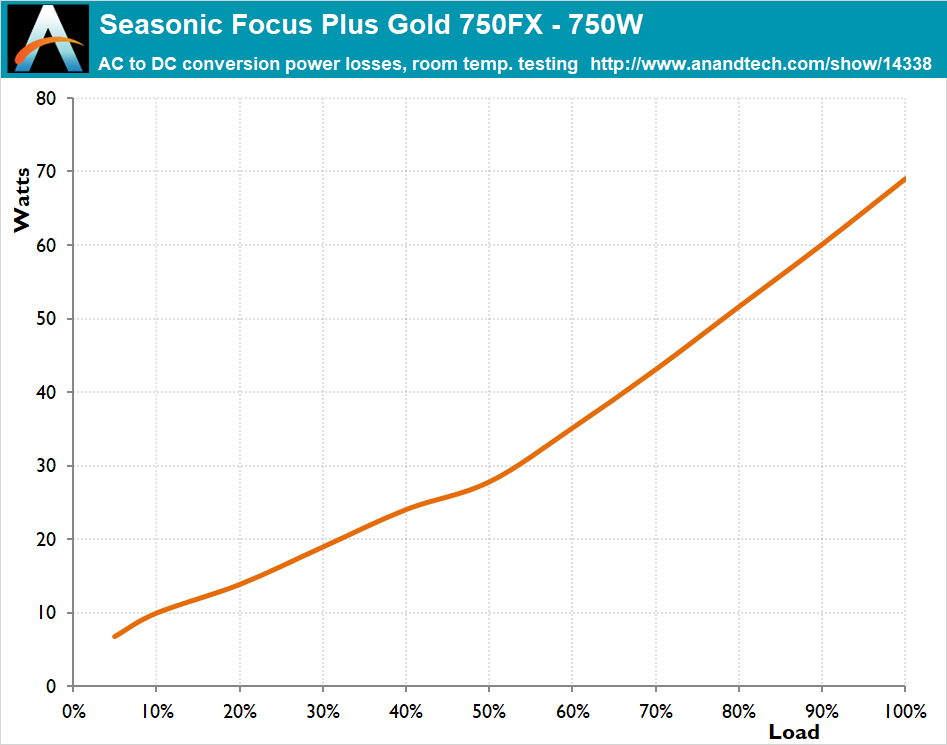The Seasonic Focus Plus Gold 750FX 750W PSU Review: SeaSonic Quality at Mainstream Prices
by E. Fylladitakis on May 16, 2019 10:00 AM EST- Posted in
- Cases/Cooling/PSUs
- Seasonic
- PSUs
- 80Plus Gold
- 750W
Cold Test Results
For PSU testing, we are using high precision electronic loads with a maximum power draw of 2700 Watts, a Rigol DS5042M 40 MHz oscilloscope, an Extech 380803 power analyzer, two high precision UNI-T UT-325 digital thermometers, an Extech HD600 SPL meter, a self-designed hotbox, and various other bits and parts. For a thorough explanation of our testing methodology and more details on our equipment, please refer to our How We Test PSUs - 2014 Pipeline post.
Right off the bat, the SeaSonic Focus Plus Gold 750FX behaves a little strangely in terms of electrical conversion efficiency. While most designs easily meet the 80Plus efficiency certification requirements at an input voltage of 115V AC – where the standard’s requirements are more lenient – the Focus Plus Gold 750FX greatly surpasses the 80Plus Gold certification requirements with an input voltage of 230V AC, only for the unit to struggle when powered from a 115V AC source. When the input voltage is 230V AC, the average efficiency across the nominal loading range is over 91.5%, an amazing figure for a mainstream PSU. If the input voltage is 115V AC, the efficiency plummets by nearly 3 percentage points across the entire load range, with the PSU barely meeting the 80Plus Gold certification requirements.
The default thermal control mode for the SeaSonic Focus Plus Gold 750FX adopts a semi-fanless cooling strategy, meaning that the fan will start only when it needs to. In our case, the fan started once the load surpassed 215-220 Watts. Naturally, the lack of active cooling under low loads means that the internal temperatures of the PSU will be comparatively higher than those of a full-time actively cooled PSU, but the temperature of the PSU quickly stabilizes one the fan starts. The internal temperatures of the SeaSonic Focus Plus Gold 750FX are mediocre for such an efficient product.
A look at the sound pressure level chart reveals that the active cooling requirements of the SeaSonic Focus Plus Gold 750FX are quite low. The fan does not even start before the load is greater than 200 Watts. When the fan eventually starts, the sound pressure is at practically inaudible levels while the load is below 400 Watts, after which point the thermal controller will keep increasing the speed of the fan in order to cope with the rising cooling requirements of the PSU.















14 Comments
View All Comments
KAlmquist - Saturday, May 18, 2019 - link
Opps. My previous comment was meant to be a reply to GeoffreyAjust4U - Saturday, May 18, 2019 - link
Seasonic has a gold star rating in the industry.rozmaster - Tuesday, June 11, 2019 - link
This good But corsair is so better i like it anyway thank you .https://rozmusic.com/
beginning - Saturday, July 13, 2019 - link
Very useful article. Especially liked the details about the quality of internal components and the operating temperatures. Thank you.